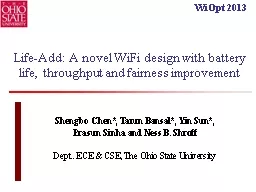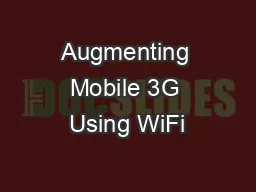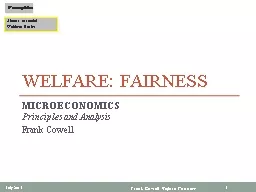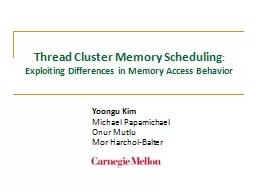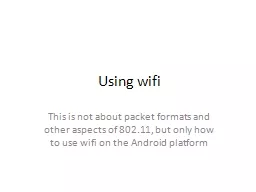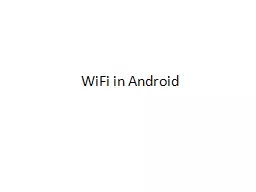PPT-Life-Add: A novel WiFi design with battery life, throughput and fairness improvement
Author : mitsue-stanley | Published Date : 2018-12-26
Shengbo Chen Tarun Bansal Yin Sun Prasun Sinha and Ness B Shroff Dept ECE amp CSE The Ohio State University WiOpt 2013 Background Battery life is a
Presentation Embed Code
Download Presentation
Download Presentation The PPT/PDF document "Life-Add: A novel WiFi design with batte..." is the property of its rightful owner. Permission is granted to download and print the materials on this website for personal, non-commercial use only, and to display it on your personal computer provided you do not modify the materials and that you retain all copyright notices contained in the materials. By downloading content from our website, you accept the terms of this agreement.
Life-Add: A novel WiFi design with battery life, throughput and fairness improvement: Transcript
Download Rules Of Document
"Life-Add: A novel WiFi design with battery life, throughput and fairness improvement"The content belongs to its owner. You may download and print it for personal use, without modification, and keep all copyright notices. By downloading, you agree to these terms.
Related Documents

